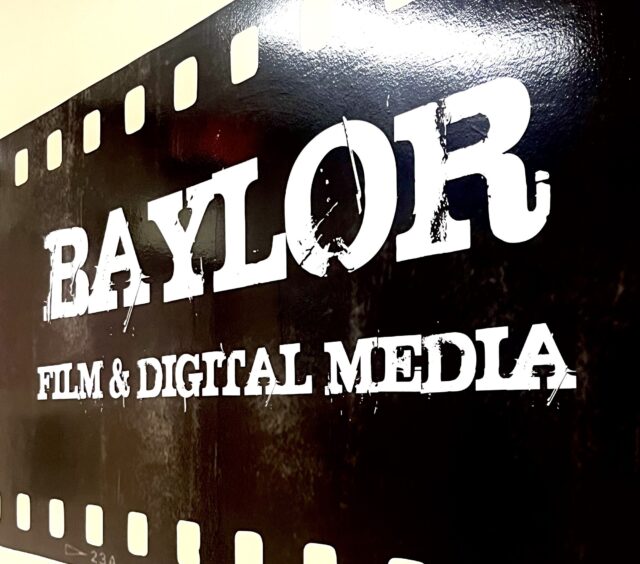By Kaylee Hayes | Reporter
In a world where technology is rapidly evolving, Baylor’s film and digital media department is working to keep education aligned with a shifting industry while preserving the century-old craft of visual storytelling.
Dr. Zachary Sheldon, lecturer in the film and digital media department, said Baylor regularly updates its production equipment to reflect current professional standards. The department has made recent purchases of cameras, equipment and production tools and increases its inventory each year to keep pace with industry expectations.
Sheldon said even as new tools — including production-focused forms of artificial intelligence — become more accessible, the heart of filmmaking remains unchanged.
“There’s a language and a grammar to filmmaking and visual storytelling that has been built up and established over the course of a century,” Sheldon said.
In hands-on courses like Lighting and Cinematography, Baylor students train with professional gear.
Frisco junior and FDM major Ella Walker said the program gives students direct experience with lighting and cameras.
“It’s a lot of hands-on work,” Walker said. “You work in teams and start using equipment right away.”
Walker said students work with specific lighting tools such as ARRI 300s and learn to recreate cinematic looks while also having the opportunity to operate cinema-grade cameras.
“We just did a project recreating a movie scene’s lighting,” Walker said. “We’re working with the Canon C70 right now.”
Walker said the program incorporates editing and color-grading software as well.
“We’re learning a lot about a software called Scratch,” Walker said. “You can get a lot more detailed when coloring a shot.”
Beyond the undergraduate level, faculty are exploring new tools that may influence future production workflows.
Dr. Corey Carbonara, professor of film and digital media, said he recently taught a master’s in fine arts class session focused on artificial intelligence in production.
“We did an AI experiment: ‘can we make a commercial and have all the individual commercials be done within, basically, two hours?'” Carbonara said. “And they did spectacularly well. They really did. It was a lot of fun.”
Sheldon said practical production remains key to understanding creative decision-making.
“At the end of the day, the majority of the things that you’re doing in our classes are hands-on exercises that are designed to force you to think through those processes,” Sheldon said.
Walker said technology can make filmmaking more impactful, but the story remains essential.
“Film has been something I’ve been interested in before I knew about the technical side of film,” Walker said. “Film is all about hands-on. Film is all about the decisions you make in the moment.”
As new technologies continue to disrupt past workflows, Baylor’s FDM program is preparing students by equipping them to enter the industry ready to adapt, without losing the humanity behind the visual narrative.


